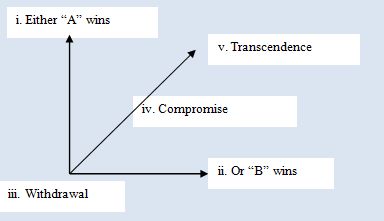TRANSCEND-Galtung Track Record on Conflict Solution/Mediation: 1958-2018
CONFLICT RESOLUTION - MEDIATION, 26 Nov 2018
Johan Galtung - TRANSCEND Media Service
The TRANSCEND Method uses dialogues with all parties to identify their goals, testing their legitimacy, and for visions of a new social reality meeting legitimate goals. Diagnoses focus on conflict and trauma, prognoses without or with intervention, therapy on visions of solution and conciliation; proposed, propagated and realized.
The method is neither necessary nor sufficient. Other approaches may work, other factors may matter; but statements and prizes indicate impact. Thoughts, words, acts may blunt conflicts-incompatibilities-contradictions; opening for alternatives to violence-war as reaction to goals blocked by conflict. Conflict transformation, gliding through history toward a solution; at the micro, meso, macro, mega levels.
The 35 cases reported are mainly from the 100 in the 2008 book 50 Years: 100 Conflict and Peace Perspectives; after that about 100 new perspectives-visions have been produced. The reader can check the book to see what has not (yet?) worked, keeping in mind that what looks like a success may turn into failure–and vice versa. Much work has been done in many places–such as Middle East, former Yugoslavia, Iraq, Afghanistan, East Asia, ISIS, Ukraine, on criminalizing war–but no impact has been registered like in the cases below. It takes time!
I. Approaches to Peace (5)
- Peace Research-Studies from 1951 as a new, applied, trans-disciplinary science, linking theory and practice being practice-indicative, and testable. Designated as “father of peace studies”.
- Peace Education by peace studies from 1958 now being taught at 500+ universities around the world and countless seminars-conferences; with many books and articles being used as texts all over.
- Peace Service as alternative to military service, in Norway as assistants at the peace research institute, after civil disobedience refusal to do meaningless service, and half a year in prison 1954/55.
- Peace Corps (proposed 1960 in Norway, before USA) for direct relations also in crisis areas, bridging fault-lines, but became mainly a one way development corps, so far, with potentials.
- Peace Journalism, 1961, reporting peace efforts, and possibilities like conflict solution and conciliation, not only violence and negative news. Has caught on particularly well in Southeast Asia.
II. Approaches to the East-West Mega Conflict (5)
- A 19-states Council of Europe study on Co-Operation in Europe proposing a UN Security Commission for Europe (1967) like the Economic Commission; working with E Chossudovsky-USSR and Jean Siotis-Greece.
- Propagating the vision particularly in Finland, according to a later president in Finland instrumental in making Kekkonen launch the Conference on Security and Cooperation in Europe (later CSSE).
- Propagating the vision in Czechoslovakia, according to the deputy foreign minister making the USSR withdraw their troops as successor to the bloc system; “you were the father of the idea, I the executor”.
- Working at top levels in Rumania, discrediting the bloc system with mutual nuclear targeting in Europe; visions of post Cold War Europe.
- Establishing a Norway-Poland axis of low ranking bloc countries, with a joint disarmament commission and depolarizing contacts (1964).
III. Approaches to the North-South Mega Conflict (5)
- North-South inside the USA: Race Relations, Desegregation; working 1958-60 for nonviolent desegregation in Charlottesville VA, opening for white extremists to have their own private schools.
- North-South inside the UK: Northern Ireland as colony, proposing 17 concrete measures from 1997 and at a Houses of Parliament conference before Easter Sunday (where they refer to North-South as “East-West”).
- South-South Cooperation, parity with North: proposed successfully 1962 for the social sciences in the Americas, later used as general model to be emulated in any field between Latin and Anglo America.
- South-South-South Cooperation Latin America-Africa-Asia: proposed 2012 at high level in China road or rail through Africa Dar-Kinshasa for container traffic linking the three continents; credit same fall.
- Rhodesia Becoming Zimbabwe, showing (from 1965) that economic sanctions against the white regime would never bring independence, working for nonviolent transition with a role for the white minority.
IV Approaches to Macro Conflicts (10)
- Korea: Unification as unifying the nation, two states can come later as basic theme from 1972, opening the border ever more, road, train, cooperation based on equity — one state meaning one president less.
- Iran: Predicting 1974 a Muslim revolution against a Zoroaster-Western Shah regime, working wit Farah Diba and her wing for a basic needs orientation compatible with Islam.
- Ecuador-Peru: proposing 1995 a two-states condominium zone for the region contested in the Andes after the 1941 war, not drawing borders, according to Ecuador’s ex-president a new idea, implemented in 1998.
- Kurds and the Four States: propagating from 1991 not moving borders but creating a Kurdistan of adjoining autonomous regions, human rights in all four and joint Kurdish institutions; two nationalities.
- Caucasus: proposing 1997 a joint territory where the three countries meet for a parliament also with a chamber for the 26 nations in the region, joint airline, maybe moving from confederation to federation.
- Myanmar: at the 2005-6 tension proposing for a military dictatorship and an opposition living in the past a think tank to explore a shared future, with federation for Myanmar, to ease the tension and move.
- Rwanda-Burundi: propagating 1997 a bi-oceanic confederation of Uganda, Tanzania, Rwanda, Burundi and the two Congos with open borders to relieve pressure and trade with Arabia-India and Latin America.
- Mexico: propagating 50 points to reduce violence, solve conflict and build peace, dividing Mexico in ten foci (federal-state-municipal being three) with five points for each as alternative to fight; 2014.
- Adjudication vs conflict solution: The conflict between Rule of Law with violence and nonviolent conflict solution can be solved by judicial mediation propagated successfully in Mexico from 2004.
- Military approaches vs peace: The military used for negative peace, security, defensive defense–at the borders, militia and nonmilitary defense–and as peacekeeping; but not for positive peace; from 1971.
V Approaches to Micro Conflicts in Daily Life: SABONA (5)
- Couples, family: helping design numerous cooperation projects for mutual and equal benefit linking the good, positive sides the parties. From victory-orientation “I am right-you not” to solution-orientation.
- Kindergarten: training teachers in not scolding shouting-fighting kids but having them formulate the problem, coming up with solutions, practicing them, training them in helping each other; from 2010.
- School: reducing bullying, “what you did is unacceptable but why did you do it?” to identify acceptable goals and solutions, also with the help of other children (who in turn may help parents); from 2004.
- University: like for schools teaching peace studies by dialogical approach to conflicts, more horizontal seminars and study groups (colloquium), and less vertical lecturing — at least always dialogue.
- At Work: Moving work relations from vertical CEO/Board-focused companies to People/Nature-focused cooperatives; less exploitation, conditioning, segmentation, fragmentation and marginalization.
VI. Approaches to Traumas (5)
- The Crusades Against Islam declared by Pope Urbain II 27-11-1095: insisting from 1990 that Pope John Paul II should distance himself in 1995; according to a Monsignor this was a factor in urging dialogue.
- Germany vs Herero, the genocide massacre in Namibia in 1904: working in 2006 for Germany to acknowledge what happened with apology, possibly compensation, beyond “forgiveness as Christians”.
- Turkey-Armenians-Kurds in 1915: Turkey used Kurds driving out Armenians as an enemy high on economic-cultural power, war more than genocide?, international commission, compensation, open border; 2006.
- Denmark vs Islam over Jyllandsposten caricature 2006: proposing and getting Danish invitation to dialogue in return for canceling burning flags and embassies, arguing right of expression and right of dignity.
- Immigrants vs host countries: immigrants have to learn and respect laws and basic norms of the host country, which has to respect their culture, inviting dialogues for mutual learning; from 2006.
__________________________________________
Johan Galtung, a professor of peace studies, dr hc mult, is founder of TRANSCEND International and rector of TRANSCEND Peace University. He was awarded among others the 1987 High Livelihood Award, known as the Alternative Nobel Peace Prize. Galtung has mediated in over 150 conflicts in more than 150 countries, and written more than 170 books on peace and related issues, 96 as the sole author. More than 40 have been translated to other languages, including 50 Years-100 Peace and Conflict Perspectives published by TRANSCEND University Press. Transcend and Transform was translated to 25 languages. He has published more than 1700 articles and book chapters and over 500 Editorials for TRANSCEND Media Service. More information about Prof. Galtung and all of his publications can be found at transcend.org/galtung.
This article originally appeared on Transcend Media Service (TMS) on 26 Nov 2018.
Anticopyright: Editorials and articles originated on TMS may be freely reprinted, disseminated, translated and used as background material, provided an acknowledgement and link to the source, TMS: TRANSCEND-Galtung Track Record on Conflict Solution/Mediation: 1958-2018, is included. Thank you.
If you enjoyed this article, please donate to TMS to join the growing list of TMS Supporters.

This work is licensed under a CC BY-NC 4.0 License.
One Response to “TRANSCEND-Galtung Track Record on Conflict Solution/Mediation: 1958-2018”
Read more
Click here to go to the current weekly digest or pick another article:
CONFLICT RESOLUTION - MEDIATION:



[…] originale: TRANSCEND-Galtung Track Record on Conflict Solution/Mediation: 1958-2018 Traduzione di Miki Lanza per il Centro Studi Sereno […]